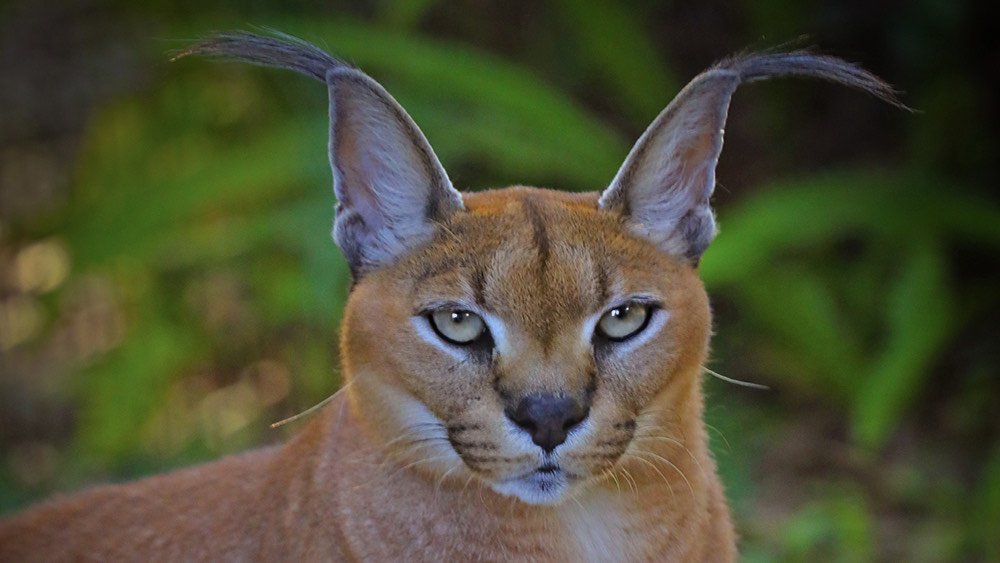The Hidden Dangers of the Wildlife Trade: How It Threatens Wild Cats and Global Health
Sassy Caracal in High Grass
The illegal and legal trade in wild animals is not just a conservation disaster—it’s also a major driver of zoonotic diseases, diseases that jump from animals to humans. A recent study analyzing 40 years of wildlife trade data has revealed alarming insights into how this global industry creates a breeding ground for pathogen transmission. Among the species most at risk? Wild cats.
Wild Cats in the Wildlife Trade: A Crisis for Conservation and Public Health
From jaguars in South America to servals in Africa and clouded leopards in Asia, wild cats are being captured, trafficked, and sold as pets, luxury goods, and even for traditional medicine. The study found that mammals involved in the wildlife trade are twice as likely to share pathogens with humans as those that remain in the wild. Even more concerning, the longer a species remains in the trade, the more diseases it accumulates—on average, one new pathogen every nine years of exposure.
The Link Between Wildlife Trade and Disease Outbreaks
Wild cats are especially vulnerable to disease transmission due to their role as top predators. They interact with various prey species, many of which may be infected with pathogens, and when captured and sold in wildlife markets, they come into contact with a mix of other animals and humans, increasing the risk of spillover events.
Some alarming cases linked to wildlife trade include:
Big cats in captivity contracting COVID-19, a reminder of the bidirectional nature of disease transmission.
Feline infectious peritonitis (FIP) in servals kept as pets, a disease that can mutate and become highly lethal.
Leptospirosis, toxoplasmosis, and rabies outbreaks linked to wild animals kept in unhygienic conditions.
The wildlife trade provides ideal conditions for pathogen evolution and transmission, creating future pandemic risks. The COVID-19 pandemic was a stark warning about the dangers of selling live mammals in markets, yet the trade continues at a massive scale.
How Can We Stop This Cycle?
1. Strengthening Legal Protections
The Big Cat Public Safety Act, passed in the U.S. in 2022, was a monumental step in banning big cats as pets and ending cub-petting attractions that exploit young animals and increase zoonotic risk. However, other countries must adopt similar laws to prevent the spread of disease and protect both human and animal populations.
2. Ending the Exotic Pet Trade
Small wild cat species, such as servals and caracals, have become popular in the exotic pet trade, particularly in the U.S. and Middle East. These animals belong in the wild, not in homes where they are stressed, improperly cared for, and often abandoned. Banning the private ownership of wild cats is crucial to reducing zoonotic disease risks and stopping cruelty.
3. Halting the Demand for Wild Cat Products
Poaching of wild cats for their pelts, bones, and body parts continues to fuel the illegal wildlife trade. Jaguars are killed for their fangs and bones in South America, leopards for their skins in Africa, and tigers for traditional medicine in Asia. Consumers must be educated to reject these products and choose ethical alternatives.
4. Supporting Conservation Efforts
Big Cat Rescue and other organizations are working to end the exploitation of wild cats and fund conservation projects that protect them in the wild. Supporting these efforts through donations, advocacy, and education can make a real impact.
The Time to Act Is Now
The longer wild cats are subjected to the horrors of the wildlife trade, the more we risk not only their extinction but also the emergence of new diseases that could threaten global public health. Reducing the trade in wild animals isn’t just an animal rights issue—it’s a matter of human survival.
By supporting strong legislation, educating others, and rejecting wild cats as pets or products, we can help break the cycle of exploitation and disease. Together, we can ensure that wild cats remain where they belong: free, in the wild, playing their vital role in the balance of nature.
Read the entire report: https://www.biorxiv.org/content/10.1101/2025.02.09.637309v1
















